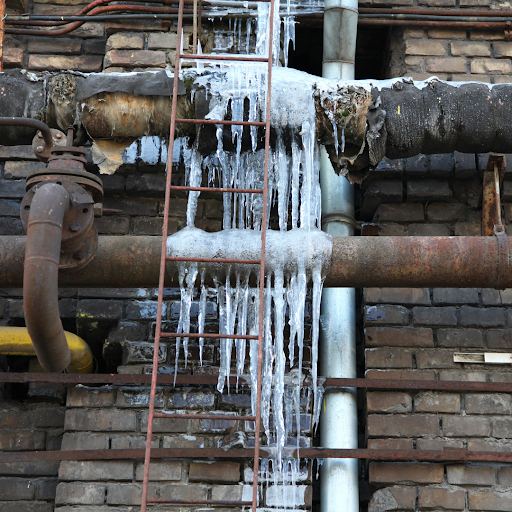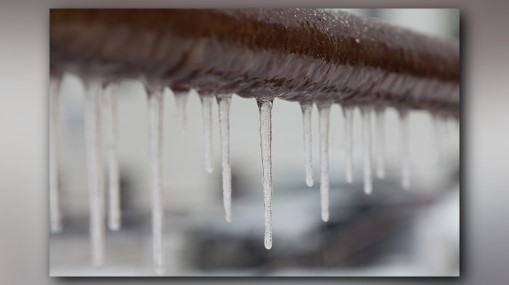This article underneath about Preventing and dealing with frozen pipes is definitely compelling. Don't bypass it.

Winter can ruin your plumbing, particularly by freezing pipes. Here's just how to prevent it from occurring and what to do if it does.
Intro
As temperature levels drop, the threat of frozen pipes boosts, potentially leading to expensive repair work and water damage. Recognizing exactly how to avoid icy pipelines is vital for home owners in cool climates.
Avoidance Tips
Shielding susceptible pipelines
Cover pipes in insulation sleeves or make use of warm tape to protect them from freezing temperatures. Focus on pipes in unheated or exterior locations of the home.
Home heating methods
Maintain indoor spaces sufficiently warmed, especially areas with pipes. Open cupboard doors to allow cozy air to distribute around pipes under sinks.
How to identify frozen pipes
Seek lowered water flow from taps, unusual odors or sounds from pipelines, and visible frost on subjected pipelines.
Long-Term Solutions
Structural adjustments
Consider rerouting pipelines away from exterior walls or unheated locations. Add added insulation to attics, cellars, and crawl spaces.
Updating insulation
Buy premium insulation for pipelines, attics, and wall surfaces. Appropriate insulation assists preserve consistent temperatures and reduces the danger of icy pipelines.
Securing Outside Plumbing
Garden hoses and outside taps
Detach and drain garden hoses before winter season. Install frost-proof faucets or cover outside taps with shielded caps.
Understanding Icy Pipelines
What triggers pipes to ice up?
Pipes ice up when subjected to temperatures below 32 ° F (0 ° C) for prolonged periods. As water inside the pipes ices up, it increases, taxing the pipe wall surfaces and possibly causing them to burst.
Dangers and damages
Frozen pipelines can lead to supply of water interruptions, building damages, and costly repair services. Burst pipelines can flooding homes and trigger substantial architectural damage.
Indicators of Frozen Pipeline
Determining icy pipelines early can stop them from rupturing.
What to Do If Your Pipes Freeze
Immediate activities to take
If you presume frozen pipes, maintain faucets open to relieve stress as the ice thaws. Make use of a hairdryer or towels taken in hot water to thaw pipelines gradually.
Conclusion
Stopping frozen pipelines requires proactive procedures and quick responses. By understanding the reasons, signs, and preventive measures, property owners can protect their plumbing throughout winter.
5 Ways to Prevent Frozen Pipes
Drain Outdoor Faucets and Disconnect Hoses
First, close the shut-off valve that controls the flow of water in the pipe to your outdoor faucet. Then, head outside to disconnect and drain your hose and open the outdoor faucet to allow the water to completely drain out of the line. Turn off the faucet when done. Finally, head back to the shut-off valve and drain the remaining water inside the pipe into a bucket or container. Additionally, if you have a home irrigation system, you should consider hiring an expert to clear the system of water each year.
Insulate Pipes
One of the best and most cost-effective methods for preventing frozen water pipes is to wrap your pipes with insulation. This is especially important for areas in your home that aren’t exposed to heat, such as an attic. We suggest using foam sleeves, which can typically be found at your local hardware store.
Keep Heat Running at 65
Your pipes are located inside your walls, and the temperature there is much colder than the rest of the house. To prevent your pipes from freezing, The Insurance Information Institute suggests that you keep your home heated to at least 65 degrees, even when traveling. You may want to invest in smart devices that can keep an eye on the temperature in your home while you’re away.
Leave Water Dripping
Moving water — even a small trickle — can prevent ice from forming inside your pipes. When freezing temps are imminent, start a drip of water from all faucets that serve exposed pipes. Leaving a few faucets running will also help relieve pressure inside the pipes and help prevent a rupture if the water inside freezes.
Open Cupboard Doors
Warm your kitchen and bathroom pipes by opening cupboards and vanities. You should also leave your interior doors ajar to help warm air circulate evenly throughout your home.

I discovered that post about 6 Ways to Prevent Frozen Pipes when doing a search on the web. Do you know about somebody else who is curious about the topic? Be sure share it. We love your readership.
Go Company
Comments on “Protecting Your Pipes from Cold Weather Issues: Essential Approaches”